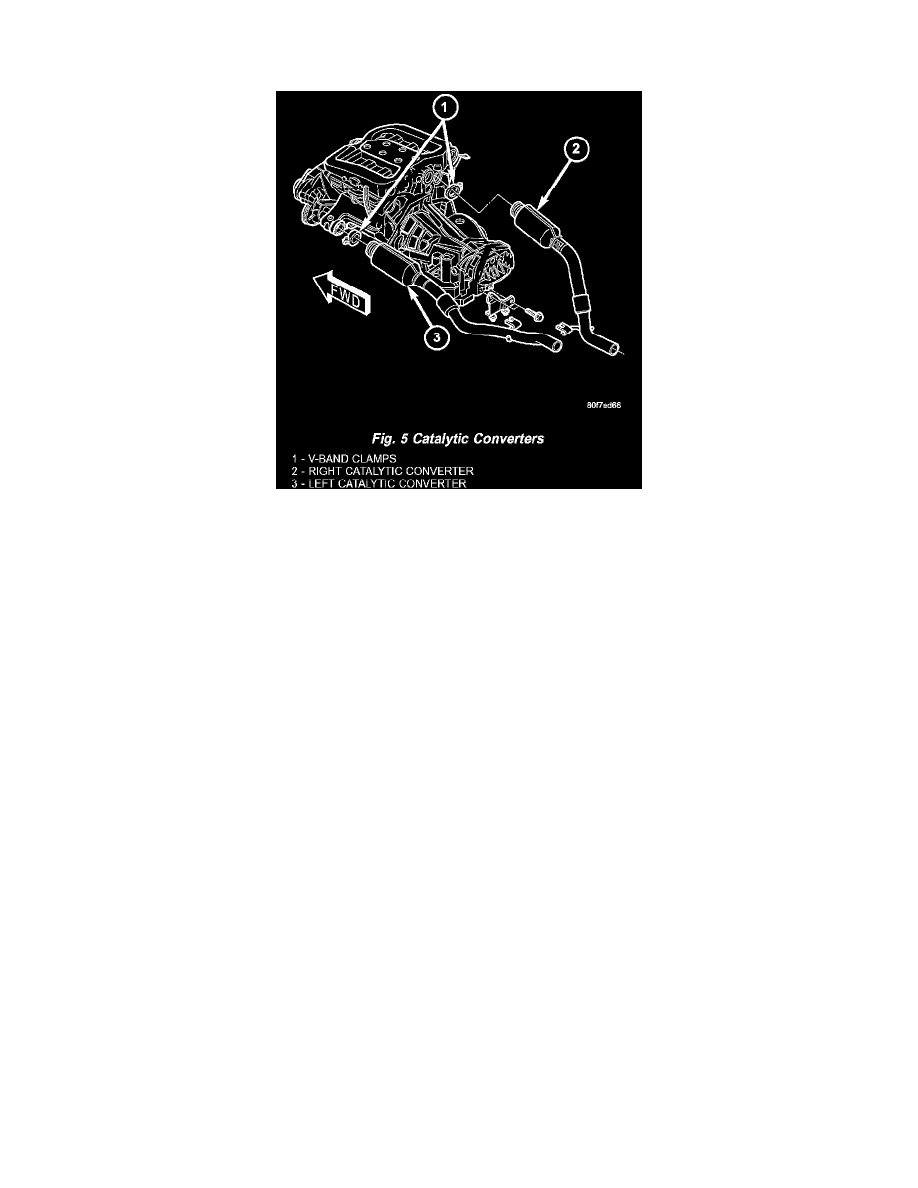Intrepid V6-2.7L VIN R (2003)

Catalytic Converter: Description and Operation
DESCRIPTION
The close coupled, three-way catalytic converter inlets are connected to the exhaust manifolds by the use of V-Band clamps. The left and right side
converter outlet pipe connects to the exhaust system.
OPERATION
The three-way catalytic converter simultaneously converts three exhaust emissions into harmless gases. Specifically, HC and CO emissions are
converted into water (H20) and carbon dioxide (C02). Oxides of Nitrogen (NOx) are converted into elemental Nitrogen (N) and water. The three-way
catalyst is most efficient in converting HC, CO and NOx at the stoichiometric air fuel ratio of 14.7:1.
The oxygen content in a catalyst is important for efficient conversion of exhaust gases. When a high oxygen content (lean) air/fuel ratio is present for
an extended period, oxygen content in a catalyst can reach a maximum. When a rich air/fuel ratio is present for an extended period, the oxygen content
in the catalyst can become totally depleted. When this occurs, the catalyst fails to convert the gases. This is known as catalyst "punch through."
Catalyst operation is dependent on its ability to store and release the oxygen needed to complete the emissions-reducing chemical reactions. As a
catalyst deteriorates, its ability to store oxygen is reduced. Since the catalyst's ability to store oxygen is somewhat related to proper operation, oxygen
storage can be used as an indicator of catalyst performance. Refer to the appropriate Powertrain Diagnostic Procedure for diagnosis of a catalyst
related Diagnostic Trouble Code (DTC).
The combustion reaction caused by the catalyst releases additional heat in the exhaust system, causing temperature increases in the area of the reactor
under severe operating conditions. Such conditions can exist when the engine misfires or otherwise does not operate at peak efficiency. Do not remove
spark plug wires from plugs or by any other means short out cylinders, if exhaust system is equipped with a catalytic converter. Failure of the catalytic
converter can occur due to temperature increases caused by unburned fuel passing through the converter. This deterioration of the catalyst core can
result in excessively high emission levels, noise complaints, and exhaust restrictions.
The use of catalysts also involves some non-automotive problems. Unleaded gasoline must be used to avoid poisoning the catalyst core. Do not allow
engine to operate above 1200 RPM in neutral for extended periods over 5 minutes. This condition may result in excessive exhaust system/floor pan
temperatures because of no air movement under the vehicle.
CAUTION: Due to exterior physical similarities of some catalytic converters with pipe assemblies, extreme care should be taken with replacement
parts. There are internal converter differences required in some parts of the country (particularly vehicles built for States with strict
emission requirements).
